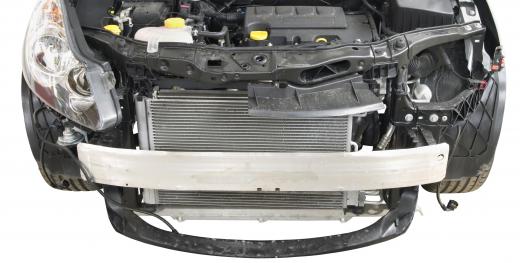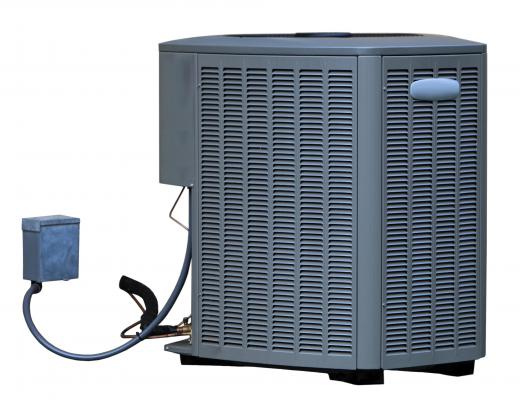A condenser coil is one of many types of heat exchangers. The primary purpose of a heat exchanger is to efficiently transfer heat between two mediums. Condenser coils are found in space heaters, air conditioners, and car radiators. Although there are slight differences in the function of these devices, the primary purpose is the same.
The term condenser coil can be used to describe all heat and cooling systems or specifically refer to air coils. Air coils are a subset of the heat exchangers and are found in air conditioning units, in both cars and buildings. The condenser coil itself has a snake-like shape, with a complex set of internal tubing used to manage the process of transferring heat or cooled air.

In a heating, ventilation, and air conditioning (HVAC) system, water, steam, or a chemical refrigerant is used. The liquid is cooled by the chiller, then circulated through the system. The condensing coil is where the liquid mixture changes from liquid to gas. This compressed, cooled gas is then pushed through the ventilation system.
In the vapor-compression and refrigeration cycle, the condenser coil is the evaporator. This process is repeated to continually supply the building with cooled air. It is important to note that most condenser units are self-maintaining. However, over time, the unit may break down, causing a reduction in efficiency that may require the complete replacement in time.

There is a wide range of condenser coils available, depending on the specifications of the system and the overall output volume. It is very important to replace the condenser coil with the corresponding unit to avoid any damage to the air conditioning unit. Keep in mind it is best to hire a professional HVAC mechanic to replace the coil on your unit. This is often required to maintain the warranty and to avoid any damage to the very expensive unit.

The first sign that there may be a problem with the condenser coil is when the temperature of the cooled air is warmer than the thermostat setting. Check the amount of refrigerant available in the system to make sure there is enough coolant. If the coolant level is fine, but the air is not cool enough, then think about replacing the condenser coil. In many areas, there are restrictions on the disposal of old condenser coils. Take the time to review the local guidelines to ensure the old unit is taken to the proper disposal center.
